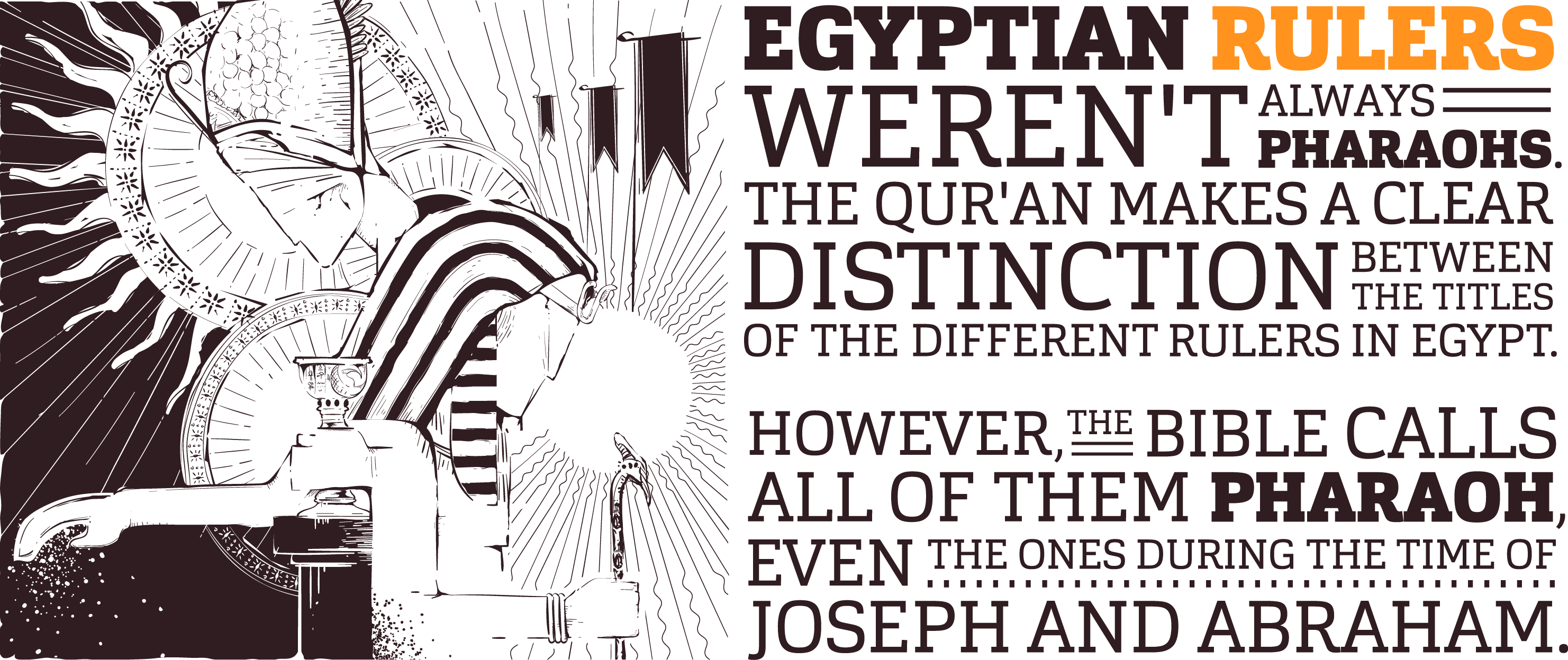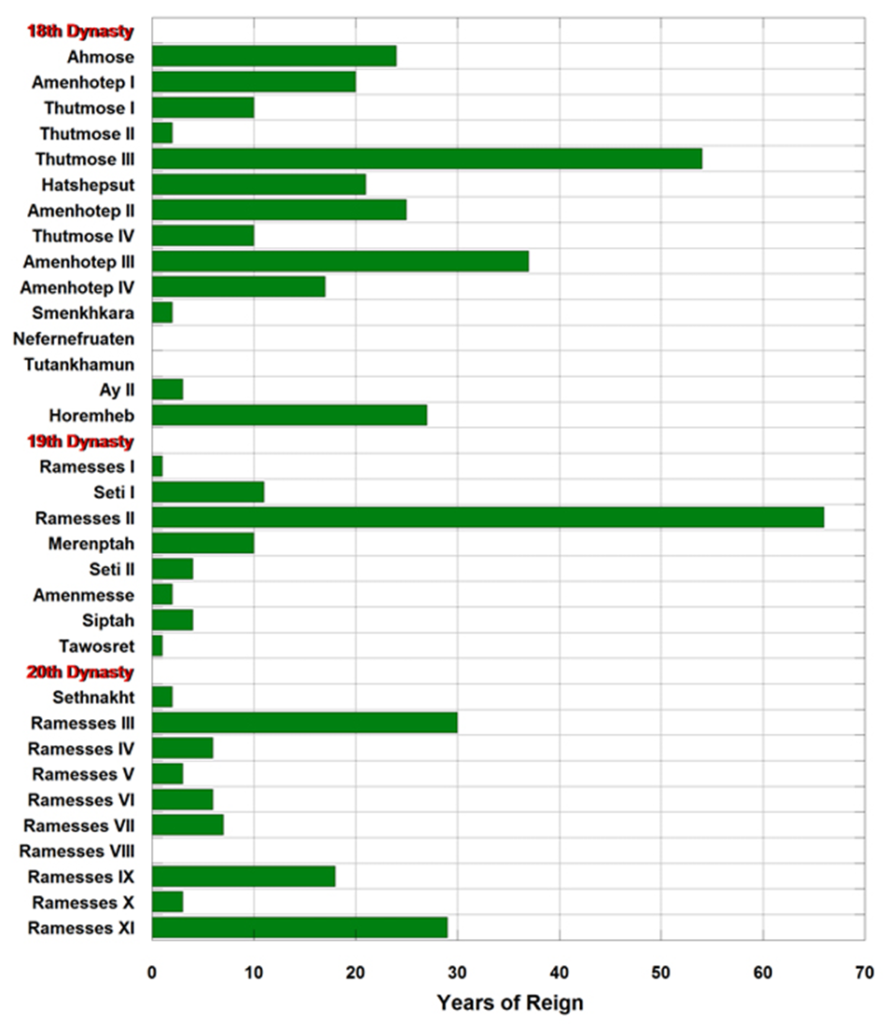
"The story of a little girl, Jihad, facing discrimination because of the name her parents gave her.
Pierce the veil--Unlock the truth--Racism, Nationalism, & Islamophobia, examined through the unbiased lens of scientific inquiry."




This article is about the usage of the term for the ruler of Egypt(Kings and Pharaohs) during the time of Joseph and Moses in the Qur'an. During the time of Joseph, the ruler of Egypt is addressed as King (Malik, in Arabic). And during the time of Moses, the ruler is called the Pharaoh (Fir'awn, in Arabic). This usage is consistent throughout the Qur'an.
Below are some of the example verses dealing with the ruler of Egypt during the time of Joseph and Moses.
The king (of Egypt) said: "I do see (in a vision) seven fat kine, whom seven lean ones devour, and seven green ears of corn, and seven (others) withered. O ye chiefs! expound to me my vision, if it be that ye can interpret visions."
SURAH 12 , VERSE 43
Moses said: "O Pharaoh! I am a messenger from the Lord of the Worlds."
SURAH 7 , VERSE 104
Hierna stuurden Wij met Onze Tekenen Mozes en Haaron naar de Farao en zijn notabelen. Maar zij gedroegen zich arrogant en zij waren een misdadig volk.
SURAH 10 , VERS 75
The Encylopedia Britannica informs us under "Pharaoh":
(from Egyptian per 'aa, "great house") , originally, the royal palace in ancient Egypt; the word came to be used as a synonym for the Egyptian king under the New Kingdom (starting in the 18th dynasty, 1539-1292 BC), and by the 22nd dynasty (c. 945-c. 730 BC) it had been adopted as an epithet of respect. The term has since evolved into a generic name for all ancient Egyptian kings, although it was never formally the king's title.
Most of us are unaware of this minor but very important point that the rulers of Egypt were called Pharaohs only in the New Kingdom period. Loosely speaking, in layman terms, all the Egyptian rulers are addressed as Pharaohs which is, of course, incorrect.
According to the Bible, the ruler of Egypt during the times of Abraham (Genesis 12), Joseph (Genesis 41) and Moses was called a Pharaoh. If this is to be taken literally then the whole story of Egypt in the Bible needs to be re-arranged from the New Kingdom Period. This is because the ruler of Egypt was called a Pharaoh only from this period onwards. Any mention of the term Pharaoh in connection with the ruler of Egypt before this period is an anachronism.
There are two well-known hypotheses concerning the entry of Joseph into Egypt. The first is that he entered during the time of Hyksos. Hyksos belonged to a group of mixed Semitic-Asiatics who settled in northern Egypt during the 18th century BC. Around 1630 they seized power, and Hyksos kings ruled Egypt as the 15th dynasty (c. 1630-1521 BC). The name Hyksos was used by the Egyptian historian Manetho (fl. 300 BC), who, according to the Jewish historian Josephus (fl. 1st century CE), translated the word as "king-shepherds" or "captive shepherds". Hyksos was probably an Egyptian term for "rulers of foreign lands" (heqa-khase).
The second one is that Joseph's entry into Egypt took place during 12th Dynasty of Middle Kingdom Period, when the ruler was supposedly Sesostris III. There are many issues involved here, e.g. Egyptology data and the doubt whether the Bible authors were eye-witnesses or whether the story of Joseph was narrated/written many centuries after the actual event. Interestingly, The Interpreter's Dictionary Of The Bible addresses some of these discrepancies :
The frank attitude toward the stories about Egypt in Genesis and Exodus is that folk memory had retained the essentials of great Hebrew experience but had later clothed that memory with some details imperfectly recollected and some circumstantial details borrowed from later times and conditions.
Joseph’s entry into Egypt occurred before the ruler was called Pharaoh. The use of Malik (King) instead of Fir'awn (Pharaoh) by the Qur'an represents historical accuracy with the data available to us. Whereas the mentioning of Pharaoh as a ruler in Genesis 41 (and more so in the time of Abraham in Genesis 12!) is an anachronism.
In the case of Moses, most of the scholars place the events of oppression and exodus in the New Kingdom Period when Merneptah and Ramases II were the rulers. They were, of course, called Pharaohs. Hence the Qur'an is correct in the usage of the word Fir'awn (Pharaoh) for the ruler of Egypt.
In conclusion: The Qur’an’s reference to the ruler as King (Malik, in Arabic) during the time of Joseph and Pharaoh (Fir'awn, in Arabic) during the time of Moses is amazingly accurate. The Bible writers, on the other hand, while writing about the stories of Abraham and Joseph, used the term Pharaoh for the rulers of Egypt which is anachronic. Further studies in Egyptology will shed more light on the lives of the Prophets in Egypt, inshallah.
So, we have narrowed almost c. 3000 years of ancient Egyptian history to a specific timescale, i.e. New Kingdom Period (c. 1539 - 1077 BCE) and the Third Intermediate Period (c. 1076 - 746 BCE) which is c. 790 years, for the setting of the Qur'anic story of Moses.
Now that we have identified the specific timescale, let us look into the next and perhaps the most important of all clues. Unlike the Bible, the Qur'an speaks about only one Pharaoh who ruled Egypt before the birth of Moses until the Exodus and his (i.e., Pharaoh's) death:
So We sent this inspiration to the mother of Moses: "Suckle (thy child), but when thou hast fears about him, cast him into the river, but fear not nor grieve: for We shall restore him to thee, and We shall make him one of Our messengers." Then the people of Pharaoh picked him up (from the river)
SURAH 28 , VERSE 7-9
Here God is narrating the event after the birth of Moses and how he was cast in the river only to be picked up by people of the Pharaoh. Part of the dialogue between Moses, after his return from Midian, and Pharaoh, as cited in the Qur'an 26:18-22, makes it perfectly clear that this Pharaoh is the same Pharaoh who took custody of Moses in his infancy.
(Pharaoh) said: "Did we not cherish thee as a child among us, and didst thou not stay in our midst many years of thy life? "And thou didst a deed of thine which (thou knowest) thou didst, and thou art an ungrateful (wretch)!"
SURAH 26 , VERSE 18-22
Here Pharaoh reminds Moses of the time that he spent as a child in his household and the event when he killed a man [Qur'an 28:33] that led to his flight to Midian. Moses’s answer to Pharaoh's argument is a clear confirmation that this Pharaoh is the same one who raised him. Furthermore, Moses rejected Pharaoh's claim that he had done him a favour by letting him live in his household. He reminded Pharaoh that the reason he ended up in Pharaoh's household was because the latter had enslaved the Children of Israel. In essence, the same Pharaoh who enslaved the Children of Israel was in power when Moses went back to Egypt.
Keeping in mind that Moses was born when Pharaoh was already in power and that the latter died in his pursuit of Moses and the Children of Israel, the length of Pharaoh's reign can be estimated by adding together the following:
Firstly, the Qur'an does not state in which year of the Pharaoh’s rule Moses was born. This means that we can only work out the minimum length of the reign of the monarch. Secondly, the age of Moses when he left for Midian can be drawn from the commentaries of the Qur'an 28:14.
When he reached full age [balagha ashuddah], and was firmly established (in life) [istawā], We bestowed on him wisdom and knowledge. [Qur'an 28:14]
When he reached full age [balagha ashuddah], and was firmly established (in life) [istawā], We bestowed on him wisdom and knowledge.
SURAH 28 , VERSE 14
The Qur'anic phrase balagha ashuddah in the above verse has given rise to differences in interpretation of what exact age is meant by it. Furthermore, this phrase is conjoined with the word istawā meaning settled or firmly established. This suggests that the phrase balagha ashuddah wa istawā refers to a stage of Moses’ life in which he attained his full physical as well as spiritual/psychological strength. The commentators interpret this as the bestowing of Prophethood at the corresponding age of 40 years (See Tafsīr al-Ṭabarī, Tafsīr al-Qurṭubī, Tafsīr al-Jalalyn, Al-Kashshāf of al-Zamakhsharī, etc.).
Thirdly, after killing one of the Egyptians, Moses immediately fled to Midian. However, what is not clear is the time that elapsed between the conferment of wisdom and knowledge on Moses and his killing of the Egyptian.
[Qur'an 28:14-22]
The events surrounding this in the Qur'an are mentioned successively, suggesting that they were perhaps separated by a shorter period of time. As it stands, this period of time is unknown. In Midian, Moses offered to help two girls to water their flocks. The father of the girls agreed to marry one of them to Moses under the condition that he serves him for 8 years and voluntarily for 2 more years to make it 10 years as stated in Qur'an 28:25-29.
[Qur'an 28:25-29]
It is not clear from the above verses if Moses fulfilled 8 or 10 years in Midian. In any case, we can take a minimum of 8-10 years as Moses' stay in Midian.
Fourthly, there is no mention of an explicit length of Moses’ second sojourn in Egypt after returning from Midian. Nonetheless, there are a number of verses in the Qur'an which can help to give us an idea of the length of time of Moses’ second sojourn in Egypt.
[Qur'an 7:127-137]
Several pieces of information can be obtained from the above verses which suggest that Moses stayed in Egypt for a considerable period of time. Firstly, there is the reference to the affliction of years of droughts and shortage of crops [Qur'an 7:131] and then a period of good time. Thus the people of Pharaoh had changing spells of bad and good fortune so that they might receive admonition. Secondly, plagues [Qur'an 7:133] themselves must have extended over a certain period of time. Thirdly, a catastrophe like a flood or swarm of locusts leaves effects, including indirect effects, that last for several months at least.


Let us now recapitulate the time period of the reign of the Pharaoh during the time of Moses. Exclusively relying on data found in the Qur'an and its commentaries, we have an account of 48-50 years which gives the minimum length of the Pharaoh’s reign. However, we still have some unaccounted time, so we will examine the length of the reign of the Pharaohs in the New Kingdom and the Third Intermediate Periods. Figures 1(A) and 1(B) give the timeline of the New Kingdom Period and the reign of rulers therein. It is observed those who reigned for close to 50 years are Tuthmosis III (~54 years, 1479-1425 BCE) and Ramesses II (~66 years, 1279-1213 BCE). In the Third Intermediate Period, the rule of Psusennes I (~45 years, c. 1051-1006 BCE) comes close [Figure 2].

If we consider the case of Tuthmosis III from the New Kingdom Period, we find that 4-7 years are not enough to account for the time periods relating to Moses. There are other problems associated with this period too. Tuthmosis III was still a young child when he succeeded to the throne after the death of his father Tuthmosis II (1482-1480 BCE) and Hatshepsut (1479-1458 BCE) was appointed regent due to the boy's young age. They ruled jointly until 1473 BCE when she declared herself a Pharaoh. Hatshepsut disappeared in 1458 BCE when Tuthmosis III, wanting to reclaim the throne, led a revolt. After Tuthmosis III became the sole ruler, he had her statues and reliefs mutilated. Thus the actual reign of Tuthmosis III was only ~33 years.
It must be added that in the Late Period (c. 722-332 BCE) comprising of 25th and 26th Dynasties and later the Persians and then the Romans, there existed no ruler who could match the length of reign of Ramesses II. The longest reign during the Late Period was that of Psamtik I (~54 years, 664-610 BCE). This is a very late and improbable date for the Exodus and the length of reign suffers from similar problems as that with Tuthmosis III (i.e., without considering the issue of coregency with Hatshepsut) discussed earlier. That leaves us only with Ramesses II.
Ramesses II ruled for a total of ~66 years. To this we can also add Ramesses II's proposed co-regency with his father Seti I which lasted for about 1 to 2 years before the former formally assumed the duties of rulership after the latter's death. This would extend the reign of Ramesses II to around 68 years. Kitchen and others prefer not to talk of co-regency but of prince-regency which meant Ramesses II had all the attributes of kingship, including his own harem, except his own regnal years. Whatever the case may be, we can account for 48-50 years of his reign from the Qur'an. We are still left with about 18-20 years of Ramesses II's reign before his death, which can be used to account for time periods relating to Moses. Thus, with the available evidence, Ramesses II appears to fit well with the statements mentioned in the Qur'an.




"The story of a little girl, Jihad, facing discrimination because of the name her parents gave her.
Pierce the veil--Unlock the truth--Racism, Nationalism, & Islamophobia, examined through the unbiased lens of scientific inquiry."





